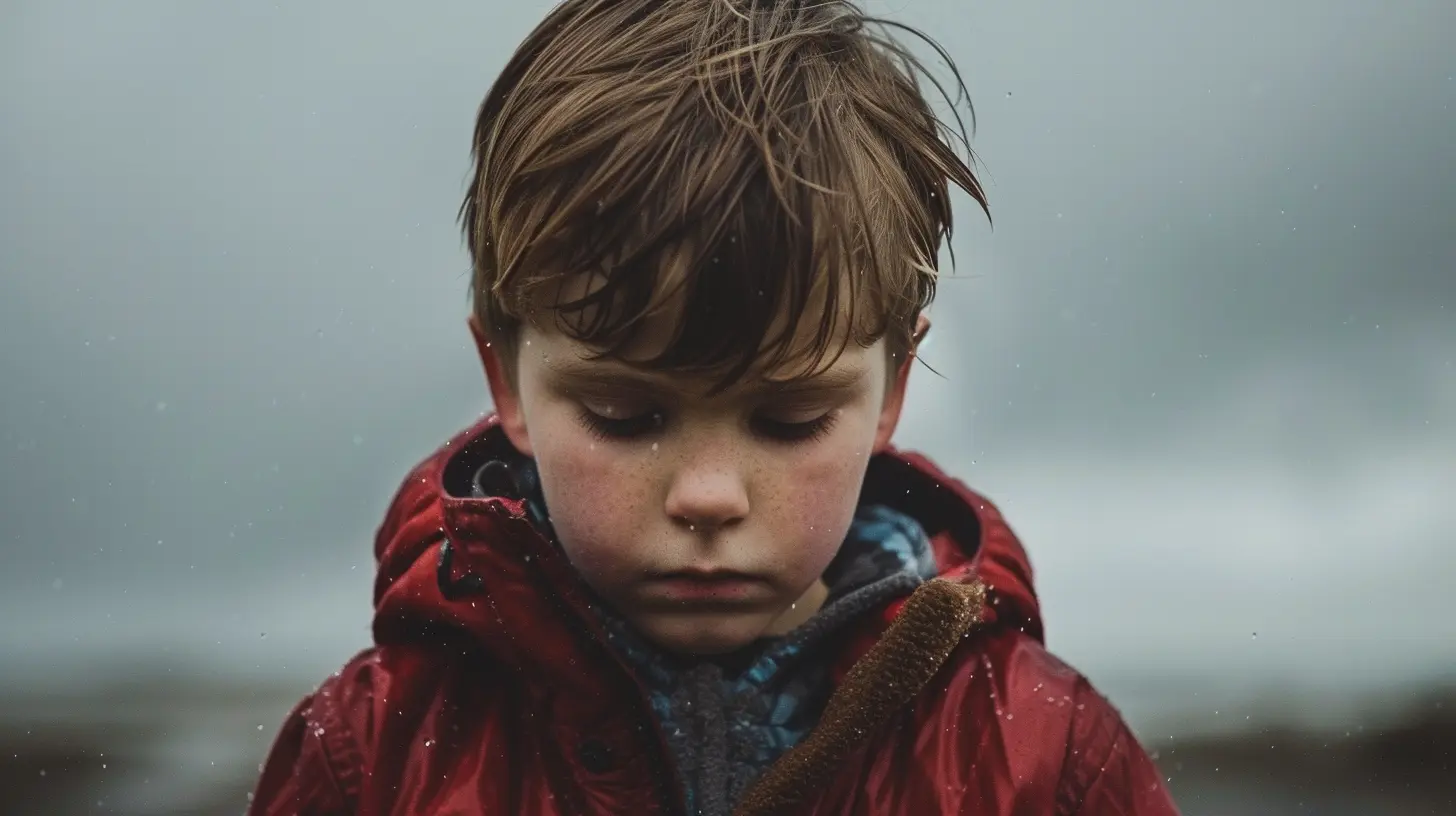When Kids Face Failure: Teaching Emotional Resilience
15 April 2025
Failure is a part of life. It’s messy, frustrating, and sometimes heartbreaking—especially for kids. As parents, we naturally want to shield our children from disappointment, but that’s not always the best approach. Instead of avoiding failure, we should teach our kids how to handle it with resilience.
Emotional resilience isn’t something kids are born with; it’s something they develop through experience, encouragement, and guidance. So, how do we help our children bounce back after setbacks? Let’s dive in.

Why Failure Is Crucial for Growth
Failure isn’t the enemy—fear of failure is. When kids avoid challenges because they’re afraid of failing, they miss out on valuable learning opportunities. In reality, failure teaches:- Perseverance – Learning how to keep going despite setbacks.
- Problem-solving – Figuring out how to fix mistakes and try again.
- Adaptability – Adjusting strategies when things don’t go as planned.
- Confidence – Gaining belief in their ability to overcome obstacles.
Think about it—how many success stories began with, “It was easy, and everything worked out perfectly”? None. Every great achievement starts with struggle.

Signs Your Child Struggles With Failure
Not all kids handle failure the same way. Some brush it off, while others take it to heart. Here are a few signs that your child might need help developing resilience:- Extreme frustration over mistakes – Meltdowns, anger, or giving up immediately.
- Fear of trying new things – Avoiding activities where they might not succeed.
- Negative self-talk – Saying things like “I’m terrible at this” or “I’ll never get it right.”
- Blaming others – Rather than taking responsibility, they blame teachers, friends, or even you!
If these sound familiar, don’t worry. With the right approach, you can help your child turn failure into a stepping stone instead of a roadblock.

How to Teach Emotional Resilience When Kids Face Failure
1. Change the Way You Talk About Failure
Kids absorb the way we react to failure—both theirs and our own. If they see you beating yourself up over mistakes, they’ll do the same. Instead, normalize failure by talking about it openly.- Share stories about your own setbacks and how you overcame them.
- Praise effort, not just results. Instead of “You’re so smart,” try “I love how hard you worked on that.”
- Use failure as a learning tool—ask, “What can we do differently next time?”
By changing the narrative, failure becomes an opportunity, not something to fear.
2. Teach Them to Manage Emotions
A big part of resilience is understanding and controlling emotions. When failure happens, kids often get stuck in frustration and self-doubt. Teach them to manage these feelings by:- Encouraging deep breaths and mindfulness techniques.
- Helping them label their emotions: “I see you’re frustrated. That’s okay.”
- Giving them space to process their disappointment before jumping into problem-solving.
Once they understand their emotions, they’ll be better equipped to handle failure without breaking down.
3. Focus on the Process, Not the Outcome
If success is the only goal, failure feels like the end of the world. But if kids learn to value the journey, they become more resilient. Encourage them to:- Set small, achievable goals along the way.
- Reflect on what they learned, not just whether they won or lost.
- Celebrate progress, no matter how small.
Imagine your child is learning to ride a bike. Instead of focusing on how many times they fell, focus on the fact that they’re getting back up. That’s resilience in action.
4. Encourage a Growth Mindset
A fixed mindset says, “I failed because I’m not good at this.” A growth mindset says, “I failed, but I can learn and improve.” Which mindset do we want our kids to have? Definitely the second one.Ways to foster a growth mindset:
- Replace “I can’t do this” with “I can’t do this…yet.”
- Highlight stories of people who succeeded after failing (think Thomas Edison or Michael Jordan).
- Remind them that effort, not talent, leads to success.
With a growth mindset, failure becomes a stepping stone, not a dead end.
5. Let Them Fail (Within Reason)
This one’s tough, but hear me out—resilient kids need to experience failure firsthand. That means we have to resist rescuing them every time things get tough.- Let them struggle through difficult homework instead of giving them the answers.
- Allow them to lose a game without blaming the referee or the rules.
- Give them responsibilities and let them experience consequences when they don’t follow through.
It’s tempting to step in and fix everything, but sometimes the best way to help is to step back.
6. Teach Problem-Solving Skills
Failure isn’t just about what went wrong—it’s about what happens next. Teach your child to approach setbacks with a problem-solving mindset.- Ask questions like, “What could you try differently next time?”
- Brainstorm solutions together instead of handing them the answer.
- Encourage creative thinking—sometimes, the best solutions come from unexpected places.
When kids learn to see problems as challenges to solve, failure loses its sting.
7. Model Resilience Yourself
Kids don’t always listen to what we say, but they always watch what we do. If you handle your own setbacks with resilience, they’ll learn by example.- Show them how you bounce back from disappointments.
- Talk through your problem-solving process out loud.
- Admit when you make mistakes, and demonstrate how you handle them.
Your actions speak louder than words, so lead the way.

The Long-Term Impact of Resilient Kids
Teaching kids emotional resilience isn’t just about helping them deal with today’s failures—it’s about setting them up for a lifetime of success. Resilient kids grow up to be:- Confident adults who believe in their ability to tackle challenges.
- Problem-solvers who don’t give up at the first sign of difficulty.
- Empathetic individuals who understand that struggles are a natural part of life.
In the end, failure isn’t something to be feared. It’s just another step on the path to growth. And as parents, our job isn’t to remove obstacles—it’s to help our kids climb over them.
Final Thoughts
When kids face failure, they don’t need rescuing—they need guidance. By changing how we talk about failure, teaching problem-solving skills, and modeling resilience, we can help our children develop the emotional strength they need to thrive.So the next time your child stumbles, resist the urge to fix everything. Instead, remind them: “You’ve got this. I believe in you.” Because that belief? That’s what builds resilience.
all images in this post were generated using AI tools
Category:
Emotional IntelligenceAuthor:

Zelda Gill
Discussion
rate this article
4 comments
Max Love
Great insights! Teaching kids to embrace failure builds resilience and prepares them for life's challenges. Thank you!
April 21, 2025 at 2:22 PM

Zelda Gill
Thank you for your kind words! I'm glad you found the insights valuable. Embracing failure is indeed crucial for building resilience in children.
Colette McIlroy
This article beautifully highlights the importance of nurturing emotional resilience in our children. Encouraging them to embrace failure as a learning opportunity fosters growth and strength. It's a vital lesson that will serve them well throughout life. Thank you for sharing these insights!
April 20, 2025 at 2:45 AM

Zelda Gill
Thank you for your thoughtful comment! I'm glad you found the insights valuable for fostering emotional resilience in children.
Darius Thompson
Helping kids navigate failure builds emotional resilience. Encourage open dialogue about feelings, normalize setbacks, and model perseverance—essential tools for lifelong growth and confidence.
April 18, 2025 at 4:14 AM

Zelda Gill
Thank you for highlighting the importance of open dialogue and perseverance! It’s crucial for kids to understand that setbacks are opportunities for growth. Your insights perfectly capture the essence of building emotional resilience.
Luma McGovern
Teaching kids to embrace failure fosters resilience, nurturing their ability to grow and adapt in life.
April 15, 2025 at 4:04 PM

Zelda Gill
Absolutely! Embracing failure is essential for developing resilience in children, equipping them with the skills to navigate challenges and thrive in life.



